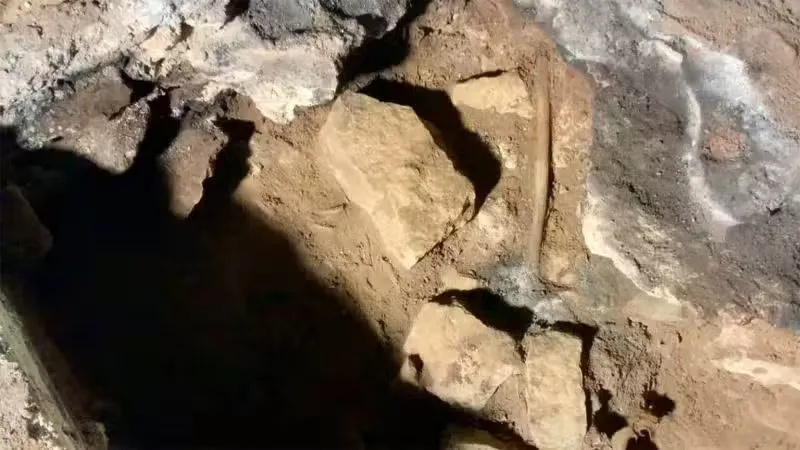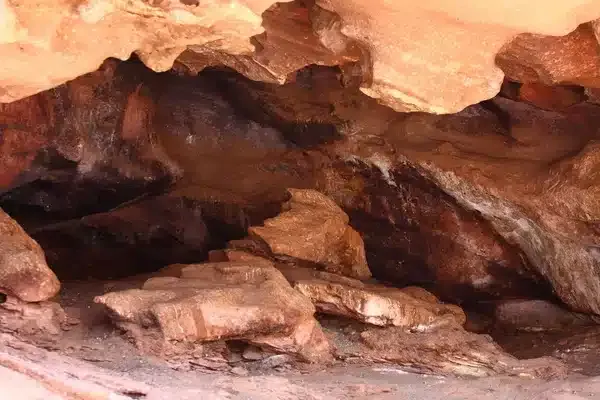Unearthing Ancient Ritual Practices
Archaeologists have unearthed what appear to be dark ritual sticks dating back over 12,000 years in a cave in Australia.
Researchers discovered two sticks in a cave in southeastern Australia, believed to have been used in dark rituals.
Dating between 11,000 to 12,000 years ago, these artifacts are indicative of curses and represent the oldest continuous cultural practice in the world.
Cloggs Cave, located in Gippsland, Victoria, on the lands of the GunaiKurnai people, housed Casuarina sticks. One, dating back 12,000 years, is the oldest wooden artifact found in Australia, while the other is approximately 11,000 years old, both used in dark rituals.
The sticks showed signs of light burns and lipids from human or animal fat, suggesting ritualistic use. The second stick had an angled shape, similar to a spear thrower, associated with power in Australian Indigenous cultures.
In the 19th century, ethnographer Alfred Howitt documented GunaiKurnai practices, including curse rituals using Casuarina sticks. This archaeological find demonstrates a 12,000-year-old knowledge transfer, representing the oldest recorded continuous cultural practice on Earth.
Cloggs Cave, situated in Gippsland, Victoria, on GunaiKurnai land, was the site of this discovery, featured in Nature Human Behavior on Monday (1).

Challenges
Part of the cave collapsed approximately six thousand years ago. Therefore, Professor Bruno David from Monash University and colleagues focused on the unaffected part of the cave.
It was in this zone that they found a partially charred Casuarina stick, about 40 centimeters long, protruding from a hand-sized limestone hearth. This 12,000-year-old walking stick is the oldest wooden object ever found in Australia.
Wooden objects typically do not survive long. Furthermore, the stick had even more unusual properties because a burn mark on the opposite side indicated it had been placed in a hot fire some time ago.
For David, this alone suggests a custom or practice. Moreover, the stick contains lipids derived from human or animal fat.
Additional excavations revealed similar Casuarina tree trunks. It was probably a thousand years younger but treated in the same way. The tip of the second stick is shaped like a thrower, a tool associated with power in traditional Australian culture.
Dark Rituals
Surviving GunaiKurnai lost cultural memory of the sticks. However, 19th-century ethnographer Alfred Howitt recorded aspects of Aboriginal culture in southeastern Australia, including descriptions of customs that were forgotten when the region’s Aboriginals were restricted and prohibited from speaking their language. Howitt writes that when GunaiKurnai want to curse someone, they have a well-trained person called mulla-mullung conduct the ceremony using a Casuarina stick and something belonging to anyone who is angry with them.

According to Howitt, the dead body stuck to a stick with an eagle feather and the stick received human or animal fat.
A piece of wood will be pinned to the ground near the fire, and the mulla-mulung will sing on it. Mulla-mullung are also healers and may have associated rituals aimed at healing people.
He shared more about his discovery in an interview. According to David, the connection between these archaeological discoveries and more recent GunaiKurnai practices reveals 12,000 years of transmitted knowledge.
Furthermore, he said that nowhere else on Earth are there archaeological evidence of a specific cultural practice that dates back to ancient times.
Thus, these dark ritual sticks not only speak of that people’s culture but also complement an important period in history. It may be the first step in uncovering cultures even older than currently known.
FAQ
Q: When were the dark ritual sticks discovered? A: The dark ritual sticks were discovered in a cave in southeastern Australia, dating back over 12,000 years.
Q: What were the dark ritual sticks made of? A: The sticks were made of Casuarina wood, showing signs of ritualistic use including burn marks and lipids from human or animal fat.
Q: Who were the GunaiKurnai people? A: The GunaiKurnai are Indigenous people of Victoria, Australia, where the cave Cloggs is located.
Q: What is significant about this archaeological find? A: This find represents the oldest continuous cultural practice recorded on Earth, shedding light on ancient ritual traditions.
Q: Why are dark rituals significant in Australian Indigenous cultures? A: Dark rituals, such as those involving curse sticks, are significant as they reflect deep cultural practices and beliefs of the GunaiKurnai people.
Q: What challenges did archaeologists face during the excavation? A: Archaeologists faced challenges such as cave collapses over time, requiring them to focus on the preserved parts for their discoveries.
Q: How did Alfred Howitt contribute to understanding Aboriginal culture? A: Alfred Howitt’s ethnographic work in the 19th century documented customs and rituals of Aboriginal cultures, providing valuable insights into their practices.
Q: What is the future impact of this discovery? A: This discovery opens avenues for further understanding ancient cultures and their rituals, potentially revealing more about early human civilizations.
Q: How do dark rituals connect to healing practices? A: Rituals involving curse sticks, as documented, also include healing practices conducted by designated individuals within the GunaiKurnai community.
Q: What role does archaeological research play in preserving cultural heritage? A: Archaeological research preserves and interprets cultural heritage, ensuring that ancient practices and traditions are understood and respected.

